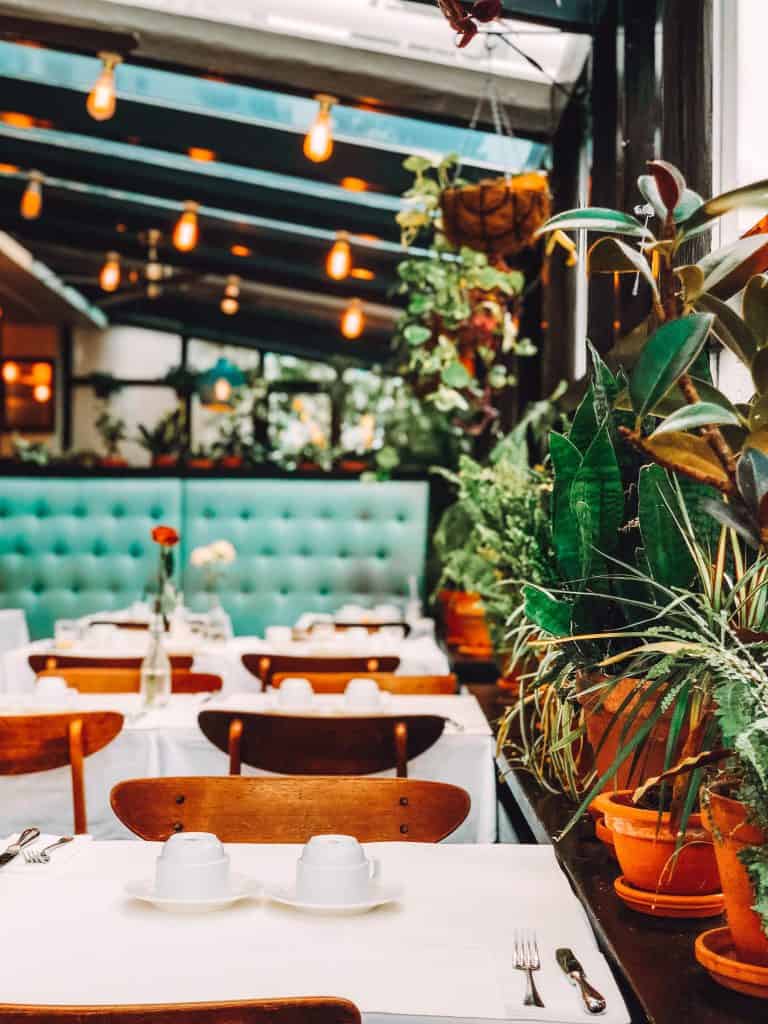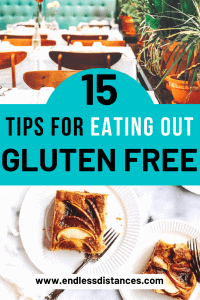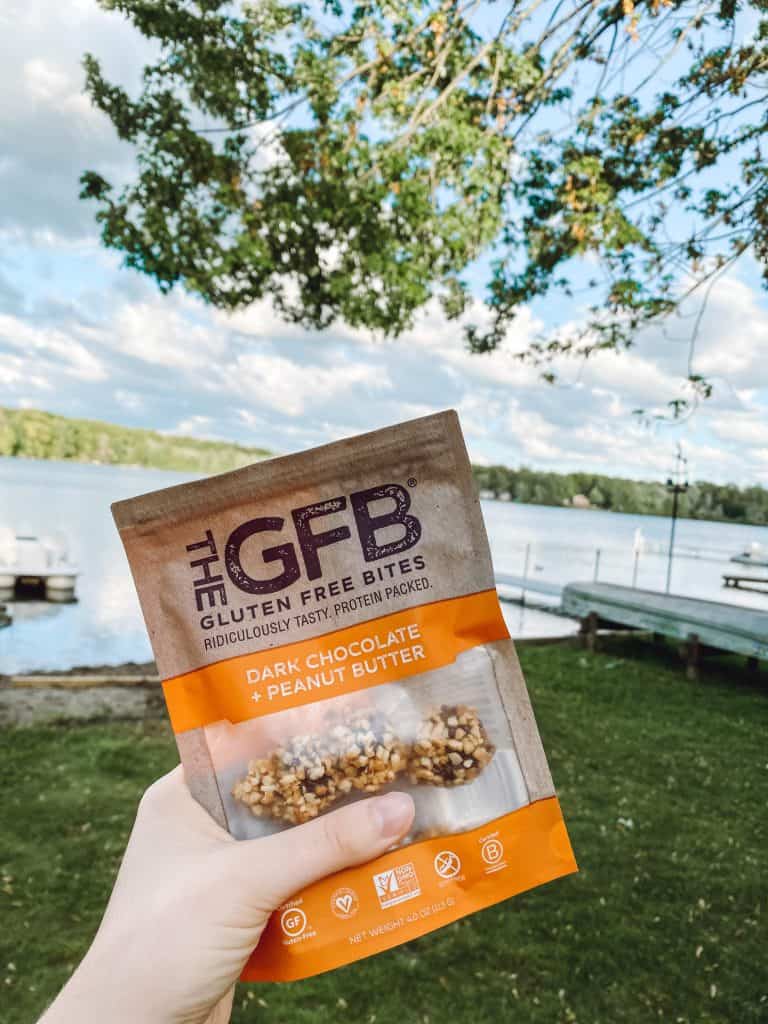15 Tips For Eating Out Gluten Free Safely
I love to travel and I tend to eat out a lot when I’m on the road. You’ll see my gluten free travel guides from around the world as a testament to that! I also love to eat out when I’m at home. But eating out gluten free isn’t always easy, and it’s taken me years to feel confident in it.
Over time, I’ve developed a system that makes eating out gluten free so much less stressful than it was in 2012 when my doctor first suggested I had celiac disease. So the question is, how do I go about finding these restaurants and eating at them? I want to share my system with all of you. You deserve to feel not only able to, but confident in eating out gluten free.
15 Tips For Eating Out Gluten Free Safely
If you are a newly diagnosed celiac, eating out is probably terrifying at worst, and overwhelming at best. That’s totally normal. Take a deep breath – we’re going to go through this one step at a time! I didn’t learn how to eat out gluten free (safely) overnight. It’s taken literally years, and I’m not ashamed to admit it – a lot of errors along the way.
Back in 2012 I didn’t have a lot of guidance from my doctor, and I popped off to England for study abroad only one year later. I ate out a lot during that year of constant travel, and I also got sick a lot. Nobody had ever given me a sit down lesson in the nitty gritty of cross contact, and I suffered for it. A lot has happened since then (including medical care under gastroenterologists and dietitians at University of Michigan hospital – a celiac specialty institution). I’m now not only more comfortable eating out gluten free, but sooo much safer. That’s why I feel prepared to share all my knowledge with you!
I made a downloadable guide to eating out gluten free, which has 50+ questions about cross contact. It’s divided by cuisine, and has example scripts for speaking to servers and chefs, so as to not be overwhelming! Check it out, or keep scrolling to read my top 15 tips for eating out gluten free.
1. Educate yourself on hidden sources of gluten
A lot of eating out gluten free comes down to educating wait staff on your needs, and assessing if a restaurant is able to meet those needs. If you don’t truly understand your gluten free needs first, then… you’re putting yourself at risk. (Note: Your needs might be different than mine, and this is a conversation you should have with your doctor and dietitian).
One of your first steps is to educate yourself on all of gluten’s forms – especially the unexpected ones. Think soy sauce, baking powder, vanilla extracts, bouillion cubes, blue cheeses, ground spices, and more. An average waiter might not know all those sneaky places gluten hides. Make sure you know this information. Ultimately it is your responsibility and that is what will keep you safe!
I recommend reading through this article by the Celiac Disease Foundation on hidden sources of gluten to know as a starting point!
2. Learn common cross contact “hot spots” in professional kitchens
It’s also really important to understand “hot spots” where cross contact happens in the kitchen. If you’ve never worked in a professional kitchen, though, it can be hard to know all the different places cross contact might occur. You need to know this, though, because it will determine the kinds of questions you ask the restaurant to determine if it’s truly gluten free.
For a first step, I recommend checking out this article on sources of cross contact to be aware of from Beyond Celiac. This covers “hot spots” like sponges, colanders, toasters, and cutting boards in your kitchen at home.
I recommend going a step further, though, because professional kitchens often have a lot of additional “hot spots” than your personal kitchen. For that, download my guide to eating out gluten free, where I share dozens of questions to ask based on what cuisine you’re ordering.
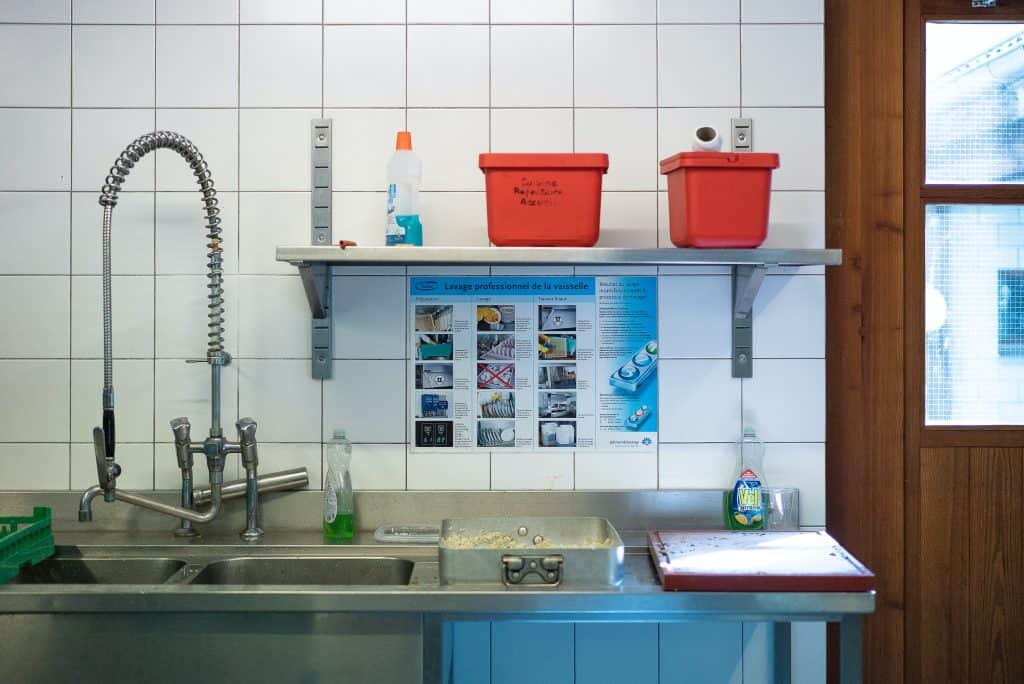
3. Find potential gluten free restaurants using these resources
When eating out gluten free, you want to find restaurants that go beyond just having a gluten free menu, or having a salad on the menu. Ideally, they are dedicated gluten free, but if they also serve gluten they should take safe precautions. A LOT of restaurants claim to be “gluten free” or “gluten friendly” (UGH), but they take literally no precautions and have just jumped on the marketing bandwagon. We want to avoid these!
First, though, you need to find some restaurants that look promising. I have seven main resources that I use to find gluten free restaurants. Read my full guide to finding restaurants with gluten free options, where I explain how to use each resource effectively (and their pros and cons).
Here’s the short version:
- Google “place name + gluten free” and similar phrases
- Search “place name + gluten free” on Pinterest
- Post in gluten free Facebook groups
- Search the Find Me Gluten Free app
- Review TripAdvisor comments
- Contact celiac associations and support groups in the area
- Contact dietitians in the area
Related: How to Find Restaurants with Gluten Free Options
4. Decide your stance on eating at non-dedicated gluten free restaurants
This is also the point when you should decide whether you are going to only go to 100% gluten free restaurants, or if you’re comfortable going to restaurants that serve gluten too.
Ultimately this is a personal choice, and you may feel more comfortable at dedicated gluten free restaurants to start with. (However, don’t get complacent with your investigating! I’ve found that many “gluten free” restaurants still have unsafe practices, like using normal oats in their flour mixes and baked goods).
Personally, I am comfortable going to some mixed restaurants and this definitely enables me to be more social. Some of the best gluten free meals I’ve eaten have been at mixed restaurants that take cross contact seriously. Saying that, you need to be much more careful in this environment and ask more questions.

5. Reach out to restaurants beforehand
Congrats! You’ve completed the steps above, and hopefully you now have some restaurants to investigate. The next stage is investigating if these restaurants that the internet says have safe gluten free options actually have safe gluten free options.
I’ve found that reaching out ahead of time 1) reduces my stress and increases my confidence that this place actually has food I can eat, and 2) prevents me from wasting time going all the way to a restaurant that I can’t actually eat at. I usually reach out by phone, email, or social media. Saying that, I don’t always reach out to a restaurant before eating there (you can ask these questions at the door), but I do find it leads to a better, less stressful experience.
6. Ask these specific questions before deciding to eat there
There are some questions you can ask to determine if a restaurant can cater to your gluten free needs. These questions are appropriate to ask whether you choose to reach out weeks ahead of time via email, by phone that morning, or simply at the door when you arrive to the restaurant.
Questions to ask before arriving at the restaurant:
- Do you have gluten free options at your restaurant?
- This is a broad question but I like to ask it first as their answer will be very telling in how much they actually know about gluten! Ex: “Yes, do you have celiac disease?” versus “What’s gluten?”
- Do you have a separate kitchen area for gluten free food preparation?
- Do you have dedicated gluten free pots and pans / toaster / oven?
- Do you have a dedicated gluten free fryer?
- If anyone ever tells you “No, the heat will kill the gluten”… RUN!
- Do you have staff training on celiac disease or gluten free food prep protocols?
- Do you cook your pasta in fresh water / with a separate colander?
Want more examples of questions to ask while eating out? Check out my downloadable guide to gluten free dining.
7. Eat out at a low traffic time
Eating out at a low traffic time means the kitchen will be less busy, and it will be easier for the server and chef to communicate your needs. This all leads to less risk of cross contact for you! Typically, lower traffic times will be early or late.
8. Ask about gluten free options before you are seated
I always confirm about gluten free options before I’m even seated. This usually results in the host getting a manager or chef for me to speak to, and hopefully being seated in a section with an experienced server. If I’ve communicated with the restaurant beforehand, I’ll mention that so they know who I am, and they can get started on any potential cleaning or prep in the kitchen.

9. Leave if you feel unsafe
This point ties into the one above. Why is it so important to ask about gluten free options before you sit down? I’ve had situations where I’ve been seated and ordered drinks, but then have to leave the restaurant when I determine that they can’t cater to my needs. That feels awful – both for me and for the server. To avoid that situation, double check before you ever sit down.
But even if you do end up in that awful scenario, know that it is your right to leave the restaurant at ANY POINT (obviously pay for anything you’ve ordered, but don’t feel pressured to order just because you’ve been seated). Your health takes precedence! Always!
Pro tip: It helps to always carry some travel-friendly gluten free snacks with you so you don’t get hangry. It’s harder to leave a borderline unsafe restaurant if you’re starving!
Related: 23 Best Gluten Free Snacks On the Go (Also All Dairy Free!)
10. Use the phrase “gluten allergy”
I almost always say “I have a gluten allergy” when I’m dining out. I know, I know, this is impossible. I actually started doing this after my celiac dietitian at University of Michigan recommended it. According to her, servers may not know what celiac disease is, but they will (probably) know what gluten is, and as soon as you say “allergy” they are trained to take it hyper-seriously. If you want to avoid cross contact, this is the way to go.
The only caveat to this is if I am at a restaurant that knows and understands celiac disease (you can contact them beforehand to explain this). Then of course, I use that phrase. You can see more of my thoughts on this in my downloadable guide to eating out gluten free.
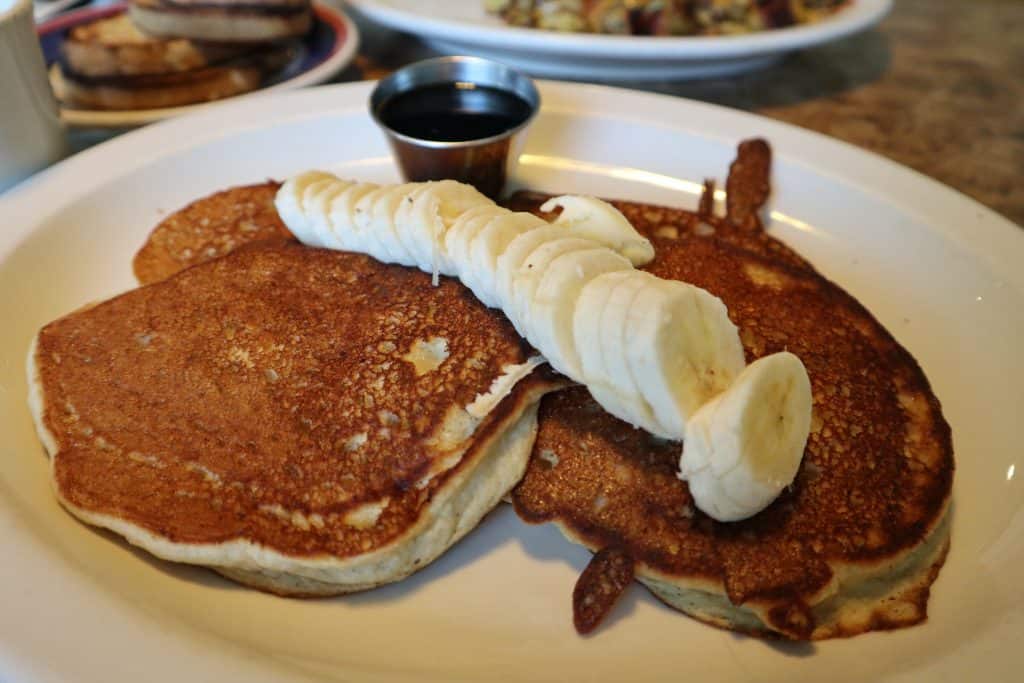
11. Ask questions based on the cuisine you are ordering
In my opinion, the interactions you have at the restaurant are the most important in keeping you safe, but also the most daunting. To keep things simple for both yourself and the restaurant staff, I highly recommend tailoring the questions you ask to the specific food you are ordering. If possible, I try to look at a menu before arriving to the restaurant, or before being seated.
In the downloadable guide to eating out gluten free that I put together, reviewed by Tayler from Celiac Dietitian, we’ve included dozens and dozens of specific questions to ask. It is also divided into different cuisines.
If you are feeling lost or unsure on the kinds of questions you should be asking at restaurants, download the guide for some actionable tips and examples.
12. Ask to speak to a chef or manager
I often feel most comfortable speaking to a manager, or preferably a chef, at the restaurants where I eat out. I highly recommend asking to speak to one of these staff members – whether it is before you arrive at the restaurant, when you order, or even once your food arrives.
After all, the chef is the one who is actually making your food, so they are the most important person when it comes to understanding your needs. Playing “telephone” with the server in between you and the chef can sometimes lead to miscommunications. If you are feeling unsure, remember it is totally acceptable to politely ask the server if you could speak to the chef.
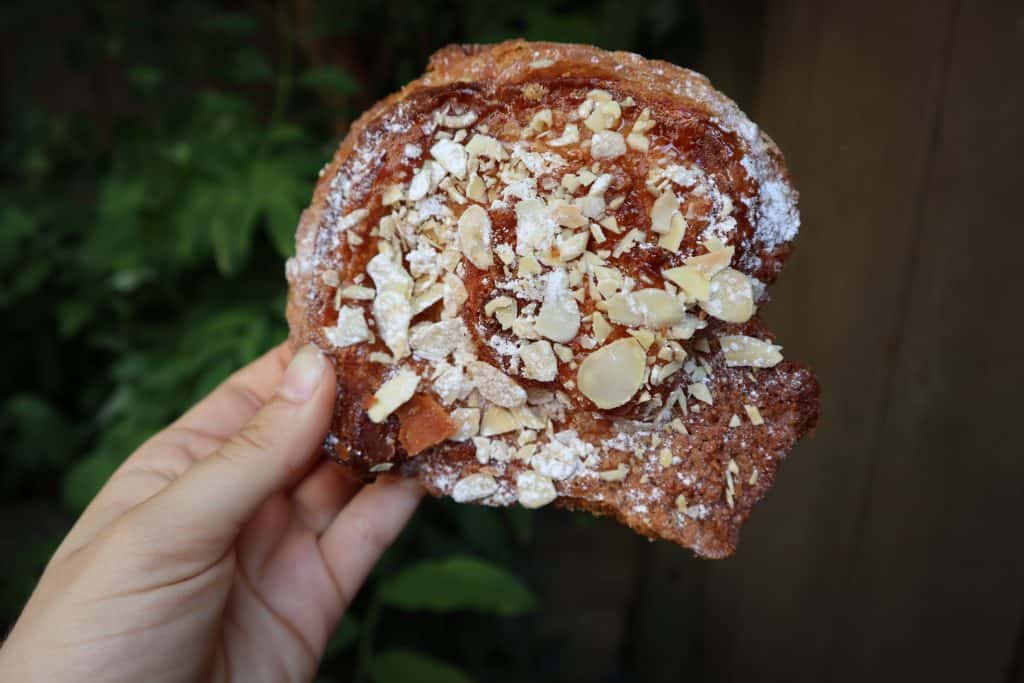
13. Choose a gluten free friendly cuisine
There are so many points at which cross contact can occur when eating out gluten free. It’s understandable if that’s a bit stressful. In that case, I would recommend focusing on eating out at restaurants that feature gluten free friendly cuisines.
What do I mean by this? Some cuisines are mostly naturally gluten free – meaning there may be little to no gluten in the restaurant (even if it’s not marketed as a “gluten free restaurant”).
Here are some gluten free cuisines to focus on:
- Ethiopian
- Nepali
- South Indian
- Thai
- Mexican
Check out the downloadable guide to eating out gluten free, which includes further information about those cuisines, and what you should be aware of regarding cross contact in each of them.
14. Confirm the dish is gluten free when it arrives
You’ve done your research, asked your questions in the restaurant, and now your food is here! Time to dig in … almost. I always do one final check with the server before I eat my food.
This looks like: the server arrives with my food, and I say “Thank you! Just confirming, this is gluten free right?” Usually the server will laugh because I’ve already asked a million times, and say “Yes!”. BUT sometimes they will say “Oh my god NO, I’m so sorry!!!”. And that’s why you ask!
Literally a worst case scenario is going through all the steps above, only to take a bite of your food and have the server come rushing back to the table saying they brought you the wrong plate. That’s why it should become your reflex to always do one final check.
15. Say thank you and leave a tip!
Finally, I truly believe it’s important to say thank you to your servers and chefs, and of course leave a tip. It’s an unfortunate truth but eating out gluten free is complicated – not just for us, but for the restaurant staff, too (especially if it’s a mixed restaurant). They likely have to put in more work for your order, whether that’s communicating with other staff, cleaning, prep, and more.
Saying thank you and tipping shows the servers how grateful you are that they helped you have a safe meal out. It also makes it more likely the restaurant will look kindly upon other gluten free diners in the future. Think of it like an investment on more safe dining for everyone!
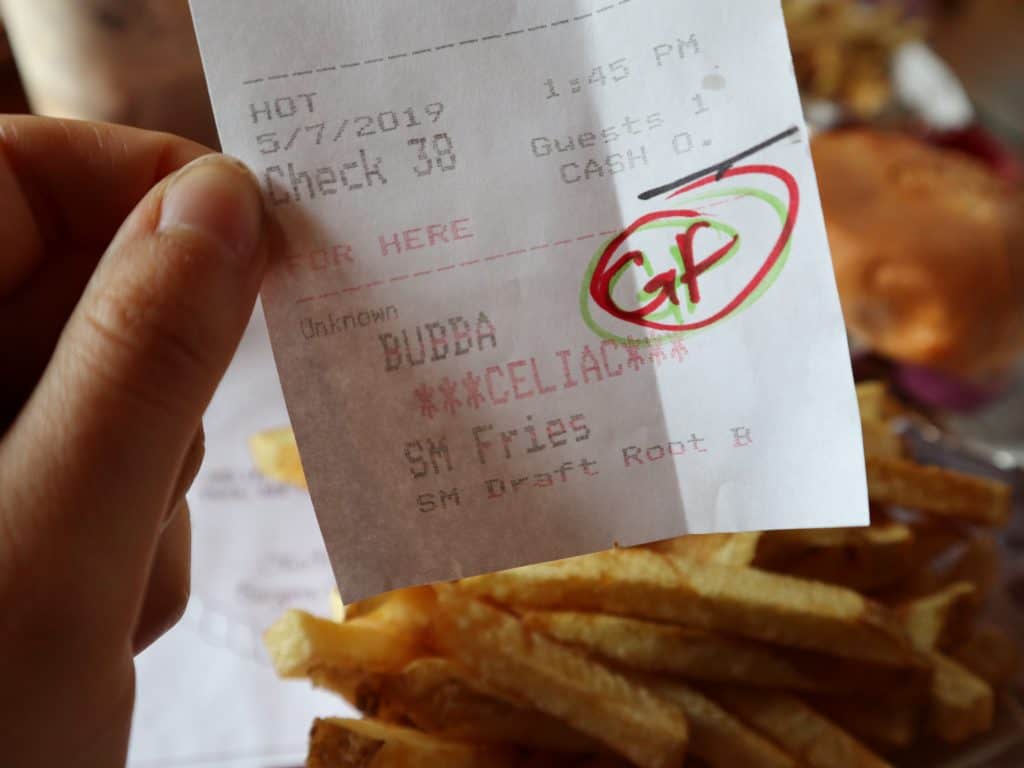
The Guide to Eating Out Gluten Free (with 50+ Questions!)
Feeling ready to try dining out gluten free? I hope so! I know this can seem like a lot, especially if you’re just starting out on your gluten free journey. I promise it gets easier, and most of this information will start to come second nature.
For me, one of the hardest parts of eating out gluten free was learning to advocate for myself and ask the right questions of servers and chefs. I can still get flustered in the moment, or feel uncomfortable grilling the server on how food is prepared.
I’ve found it immensely helpful to have a written list of questions to ask, divided by cuisine. For instance, the kinds of questions you ask before you order ice cream are TOTALLY different than when ordering sushi. But they are both SO important to know.
I created this downloadable guide with 50+ questions divided by cuisine type. Tayler from Celiac Dietitian, who is a registered dietetic technician and soon-to-be registered dietitian, reviewed it based on her own education and personal experiences with celiac disease.
I truly hope this can be a great, handy resource for the next time you try eating out gluten free!
If you’re still wondering how I’ve traveled the world completely gluten free, and regularly eat out at home, then you should first check out my article on how I find gluten free restaurants. I’d also recommend checking out my favorite gluten free snacks on the go (they’re also all dairy free!).
And if you’re planning any upcoming travels, head over to my gluten free travel guides where I have in depth information on gluten free travel around the world. If you don’t see your destination, or have further questions, feel free to comment below or email me!
Sarah xx
Pin it for later…


